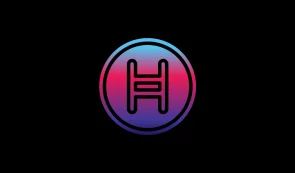What is Hedera
Hedera Hashgraph is a decentralized network structurally quite different from blockchains like Bitcoin and Ethereum but performs equivalent functions. It is based on security and validation algorithms that are more efficient than those used in classic blockchain networks.
The technology is also known as DAG, short for Directed Acyclic Graph.
This technology is designed to help Hedera Hashgraph achieve more than 100,000 transactions per second, making it a real competitor to traditional payment channels such as Visa.
The hashgraph-based network represents a practical alternative to blockchain for open ledger implementation and cryptocurrency support.
With this technology, the environmental impact is minimal due to the lack of mining operations, and transaction costs are also potentially lower.
Today, the only open ledger based on hashgraph technology is Hedera Hashgraph. The only currency based on this technology is HBAR. However, Hedera provides detailed instructions and source code examples for API calls, allowing developers to create their own tokens that work on the web.
History of Hedera Hashgraph?
Former U.S. Air Force Academy computer science professor Lyman Baird invented the hashgraph-based distributed consensus algorithm that serves as the core of Hedera Hashgraph.
In 2015, Baird co-founded Swirlds Corporation, which holds the patents for his hashgraph innovations. Swirlds has licensed the technology to several customers who build custom dApps for internal use in various industries.
In 2017, Baird co-founded Hedera Hashgraph. The company was publicly unveiled in March 2018 to a New York audience and 50,000 live viewers.
Today, Hedera Hashgraph’s board includes Boeing, Deutsche Telekom, DLA Piper, FIS WorldPay, Google, IBM, LG, Magalu, Nomura, Swirlds, Tata Communications, University College London, and Wipro.
How does Hedera Hashgraph work?
Hedera’s ABFT consensus algorithm is a PoS system where stakeholders run a protocol that verifies and marks transactions over time. This is not the same as the PoS algorithms used by blockchain systems like Ethereum. Still, it is similar because users are allowed to become validators based on their HBAR holdings.
Validators earn fees in microtransactions when participating in validating Hedera Hashgraph transactions. Users who are not validators can stack their HBAR tokens with validators and receive a pro-rata share of the fees.
Hedera Hashgraph’s most unique feature is its transaction aggregation data structure, which is claimed to process more transactions than existing blockchains and is cheaper.
Hedera Hashgraph is a proprietary algorithm where all nodes constantly pass their information to each other. It was originally designed for private use.
Hedera Hashgraph is the first iteration of the algorithm to be used in a public network, as the mechanism uses two types of nodes – consensus and mirror.
Consensus nodes determine the order and history of transactions, while mirror nodes convey this information to other network participants.
By using a limited number of nodes to determine its history, the Hedera model ensures that transactions will not be reversed later. This differs from the way most traditional blockchains achieve consensus, where the state of the blockchain is determined by users offering blocks to add to the chain in a market race open to anyone.
Hedera governance
The Hedera Hashgraph is governed by a body known as the Hedera Governing Board, which is charged with managing the consensus nodes that determine the order of transactions.
As of 2020, the board has a total of 39 members, including Google, IBM, and Boeing. The council’s role is to govern the software by voting on changes, ensuring that funds are allocated properly, and protecting the legal status of the network in various jurisdictions.
It is important to note that seats on the council are limited. Each member can serve a maximum of two consecutive three-year terms.
Since completing its ICO, Hedera Hashgraph has established partnerships and working agreements with numerous companies and institutions across a wide range of industries.
